There can be your advertisement
300x150
How to Create Stylish Garden Paths: Tips from a Landscape Designer
All about types and methods of creation
The appearance of a countryside plot largely depends on the landscape solutions implemented there. For example, garden paths are an important connecting element between the house and the garden.
Landscape designer Tatyana Kramskaya shared her thoughts with us on the types and methods of creating garden paths.
Path Concept
To begin with, you need to base your decision on the design, materials, and available budget. The most aesthetic and durable paths will be those in the premium segment. If financial resources do not allow for a costly and quick setup of the plot, then work can be done in stages and at a leisurely pace—primarily during warm seasons.
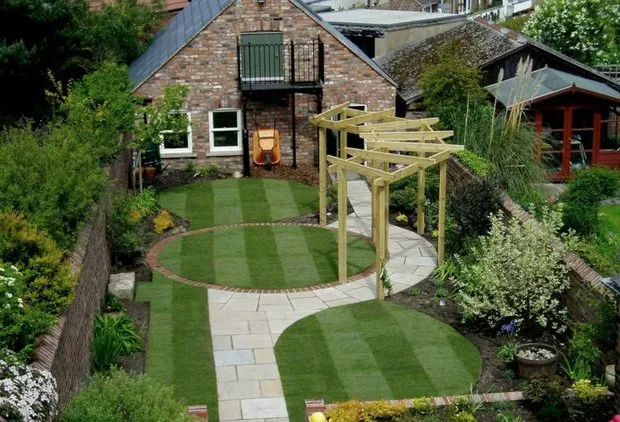
It's better to sketch 2–3 drafts with outlined areas and connect them with paths. Then, lay out the irrigation hose along their route. The key is not to overdo it with the number of paths and to test the route in real life.
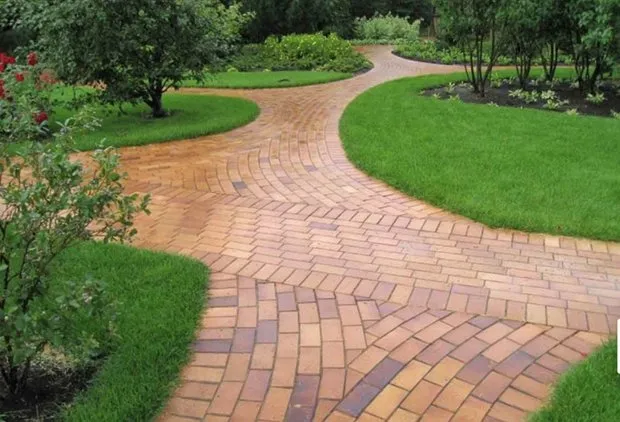
Width and Shape
Main trails should be at least 1.2–1.5 meters wide, otherwise you won't be able to walk on them side by side. The widest path should lead to the house, and narrower ones—toward secondary structures. Rectangular paths are suitable only for cottages in minimalism style.
If the plot is small, paths can be curved with bends. For children, it's better to make them ring-shaped—this allows riding bikes on them.
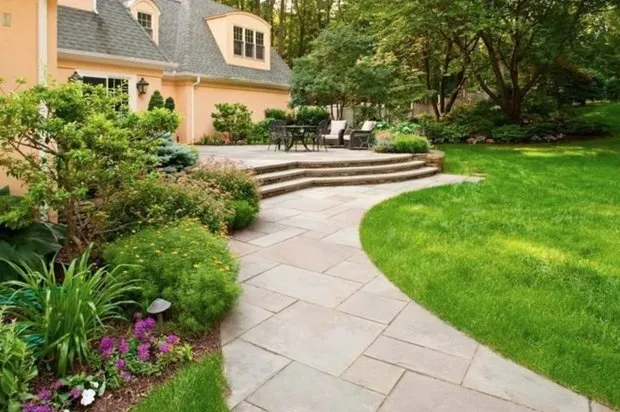
Types of Garden Paths
Tatyana recommends considering three types of the most popular paths from different price segments and laying methods.
1. Made from Gravel Substrate
Gravel is relatively inexpensive and suitable for secondary or forest paths. However, it’s quite difficult to clear in winter since it requires constant renewal of the top layer.
Gravel substrate pairs well with stone slabs and border made from clinker brick.
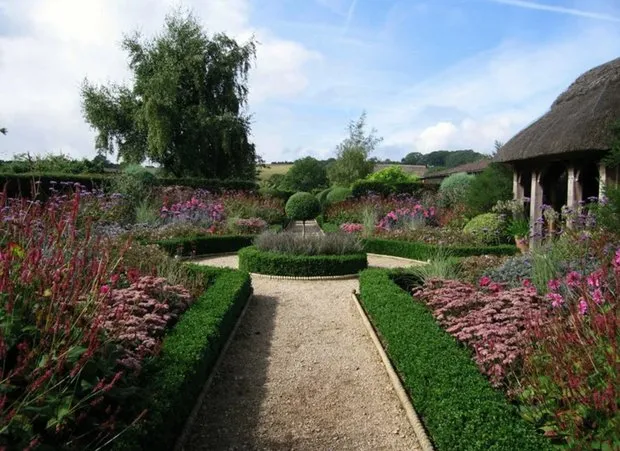
This material should be laid on a gravel-sand base. Fractions 5–20 and 20–40 mm should be laid with geotextile, and the top layer should be covered with fine gravel.
Winding paths require flexible borders, while rectangular ones—brick or stone borders.
2. Made from Natural Stone (Paving Stone)
Stone paths can also help you save money, but after winter they may start crumbling. Moreover, it’s not easy to lay them so that they look beautiful.
Instead of capital paths, you can create step-by-step paths using large slabs—they look stylish on large plots. For this, you need to plant grass or plants like alpine stonecrop between the slabs.
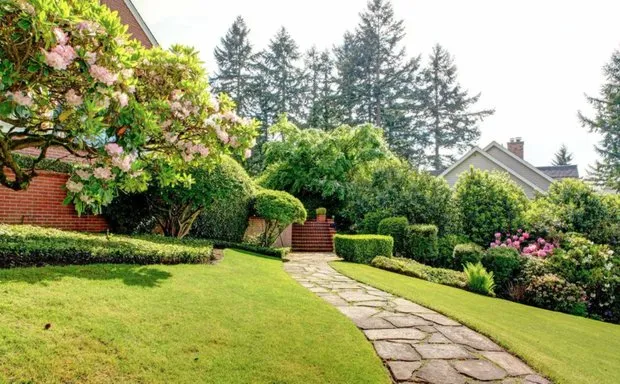
Such paths can also be made from concrete or granite slabs, treated tree logs, or concrete forms shaped like wood.
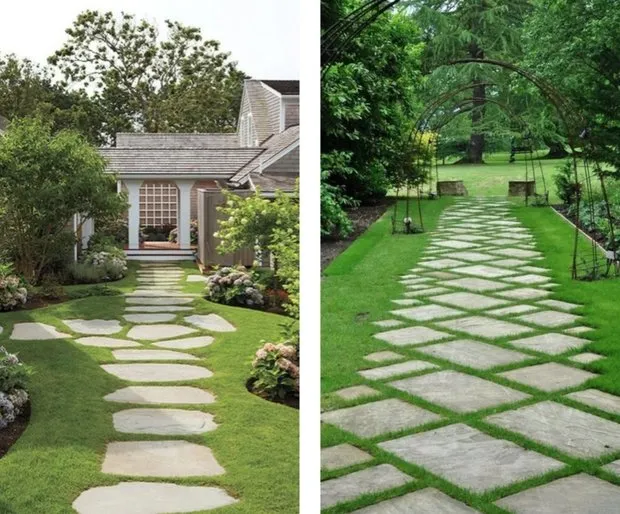
Stones 4–5 cm thick should be laid on a gravel-sand base, and thinner ones—on adhesive or concrete.
To lay step-by-step paths, use stones 5–8 cm thick and prepare the ground under each slab using agrospan, sand, and gravel. They will last much longer if properly treated with water-repellent impregnation.
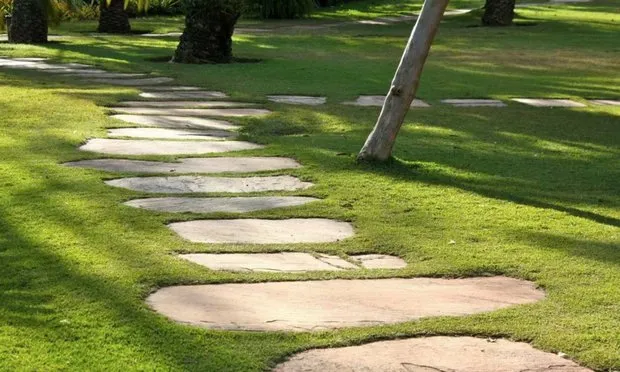
3. Made from Clinker Brick
Clinker brick is an optimal material due to its durability, frost resistance, and rich color palette. However, its cost starts from 3000 rubles per square meter, as the product is imported from Europe. A Russian equivalent can be found for about 1700 rubles, but the range there is quite limited.
Laying on Concrete and Gravel-Sand Base
Base preparation for garden paths must strictly follow the technology with mandatory compaction using a vibratory plate.
The most practical solution for laying paths is granite—its advantages include strength, durability, and high cost. Granite pairs well with clinker brick if colors and slab sizes are chosen correctly.
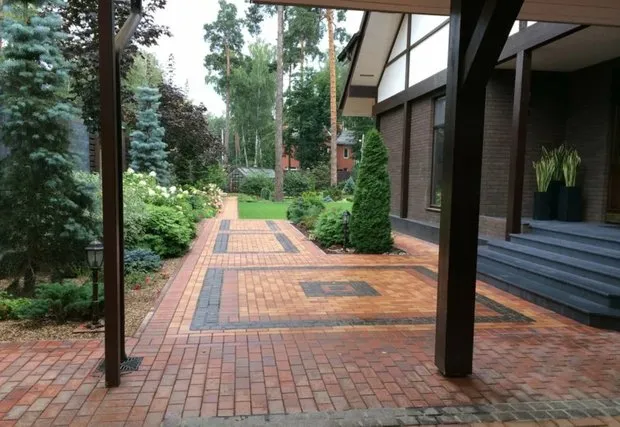
In case of concrete base for garden paths, you need to install pipe inserts and mark these spots. Then you can run lighting and watering pipes directly under the path.

All photos: Pinterest
Inappropriate Garden Paths
Tatyana recommends avoiding budget concrete brick pavers, as they fade and develop cracks.
Wooden paths are also risky in terms of short lifespan, since pine lasts only five years, and larch darkens over time. Wood is better suited for terraces or patios.
More articles:
 7 Best Buildings in Europe Built in the Last 2 Years
7 Best Buildings in Europe Built in the Last 2 Years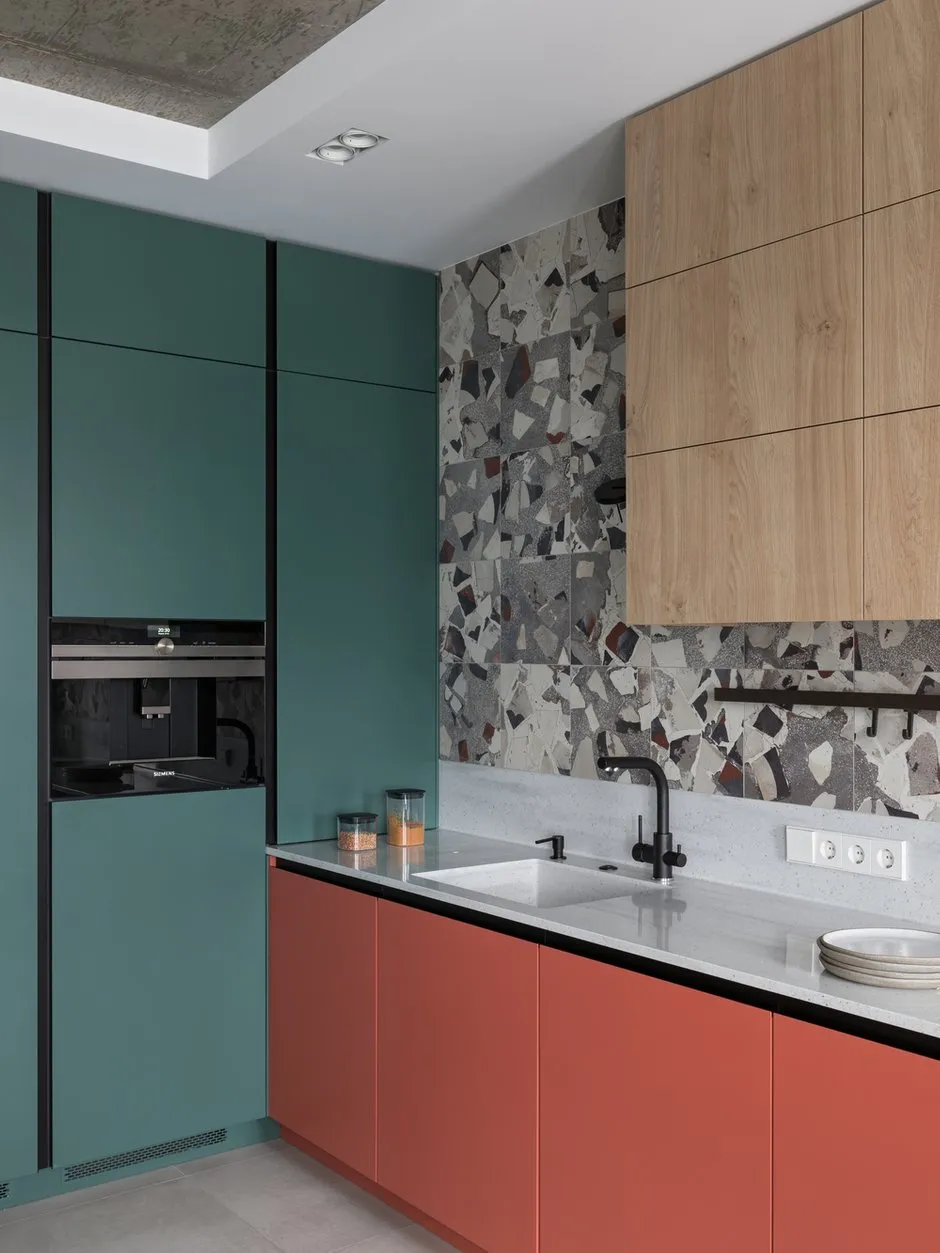 Beauty in Details: 7 Interiors with Interesting Accents
Beauty in Details: 7 Interiors with Interesting Accents 6 Modern Female Designers and Their Stunning Projects
6 Modern Female Designers and Their Stunning Projects Pride of Subjects: Cool Works by Young Designers
Pride of Subjects: Cool Works by Young Designers How Not to Give in to Panic During Difficult Times: Recommendations from a Psychologist
How Not to Give in to Panic During Difficult Times: Recommendations from a Psychologist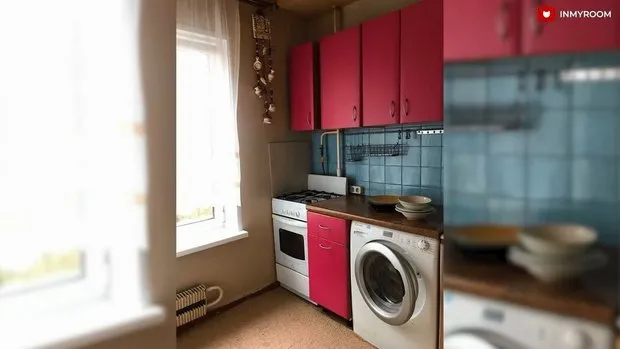 Budget Kitchen Renovation 5 m² with Calculations and Before/After Photos
Budget Kitchen Renovation 5 m² with Calculations and Before/After Photos What Flowers Can Be Planted in March Besides Seedlings
What Flowers Can Be Planted in March Besides Seedlings Proper Storage Organization: Designer Tips
Proper Storage Organization: Designer Tips